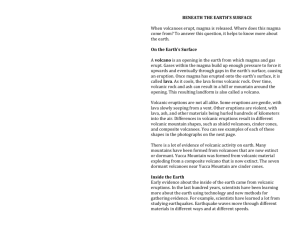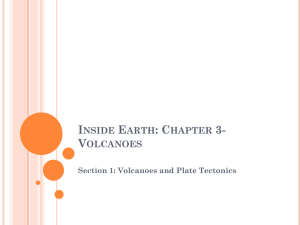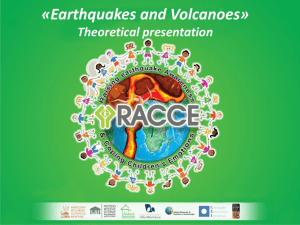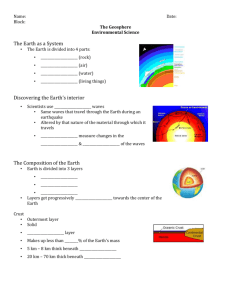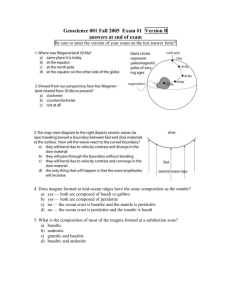File
advertisement
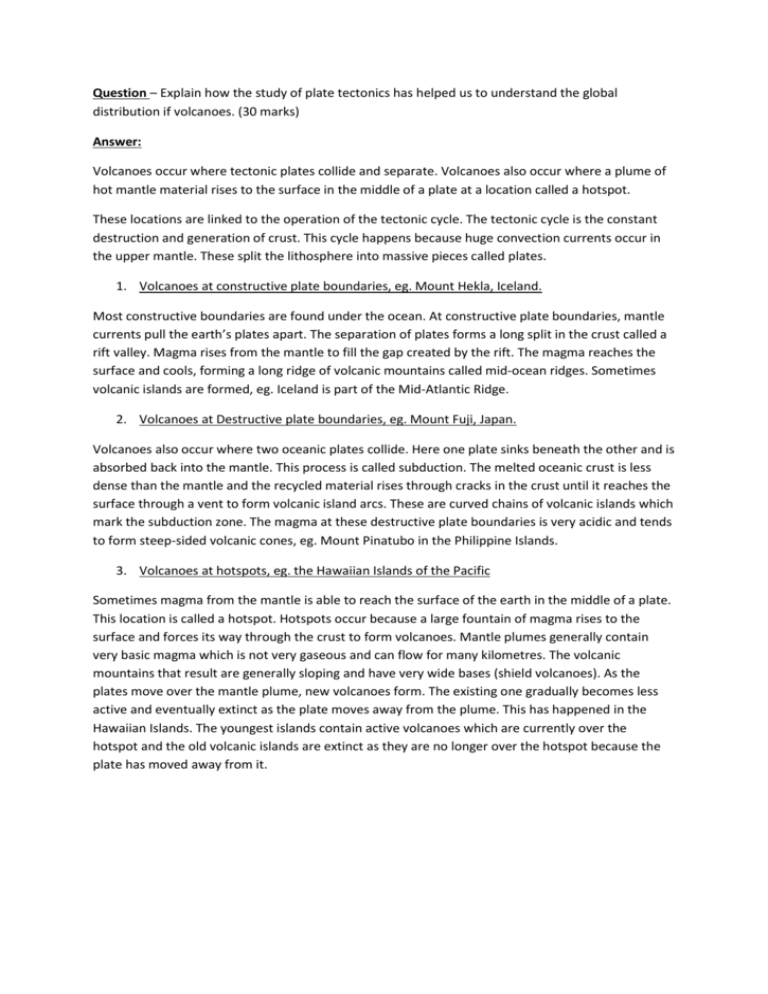
Question – Explain how the study of plate tectonics has helped us to understand the global distribution if volcanoes. (30 marks) Answer: Volcanoes occur where tectonic plates collide and separate. Volcanoes also occur where a plume of hot mantle material rises to the surface in the middle of a plate at a location called a hotspot. These locations are linked to the operation of the tectonic cycle. The tectonic cycle is the constant destruction and generation of crust. This cycle happens because huge convection currents occur in the upper mantle. These split the lithosphere into massive pieces called plates. 1. Volcanoes at constructive plate boundaries, eg. Mount Hekla, Iceland. Most constructive boundaries are found under the ocean. At constructive plate boundaries, mantle currents pull the earth’s plates apart. The separation of plates forms a long split in the crust called a rift valley. Magma rises from the mantle to fill the gap created by the rift. The magma reaches the surface and cools, forming a long ridge of volcanic mountains called mid-ocean ridges. Sometimes volcanic islands are formed, eg. Iceland is part of the Mid-Atlantic Ridge. 2. Volcanoes at Destructive plate boundaries, eg. Mount Fuji, Japan. Volcanoes also occur where two oceanic plates collide. Here one plate sinks beneath the other and is absorbed back into the mantle. This process is called subduction. The melted oceanic crust is less dense than the mantle and the recycled material rises through cracks in the crust until it reaches the surface through a vent to form volcanic island arcs. These are curved chains of volcanic islands which mark the subduction zone. The magma at these destructive plate boundaries is very acidic and tends to form steep-sided volcanic cones, eg. Mount Pinatubo in the Philippine Islands. 3. Volcanoes at hotspots, eg. the Hawaiian Islands of the Pacific Sometimes magma from the mantle is able to reach the surface of the earth in the middle of a plate. This location is called a hotspot. Hotspots occur because a large fountain of magma rises to the surface and forces its way through the crust to form volcanoes. Mantle plumes generally contain very basic magma which is not very gaseous and can flow for many kilometres. The volcanic mountains that result are generally sloping and have very wide bases (shield volcanoes). As the plates move over the mantle plume, new volcanoes form. The existing one gradually becomes less active and eventually extinct as the plate moves away from the plume. This has happened in the Hawaiian Islands. The youngest islands contain active volcanoes which are currently over the hotspot and the old volcanic islands are extinct as they are no longer over the hotspot because the plate has moved away from it.


